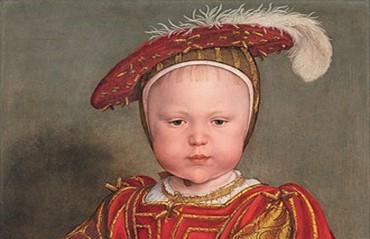Hans Holbein the Younger’s “Portrait of Edward VI as a Child” (1538) gave the 16th-century world a first look at Henry VIII’s only male heir and the future king of England. Although generally unknown today, the child did become king, but only for a short six years.
His reign was overshadowed by the contest between his half-sisters, Mary and Bess, and the long reign of the victor, Elizabeth I.






